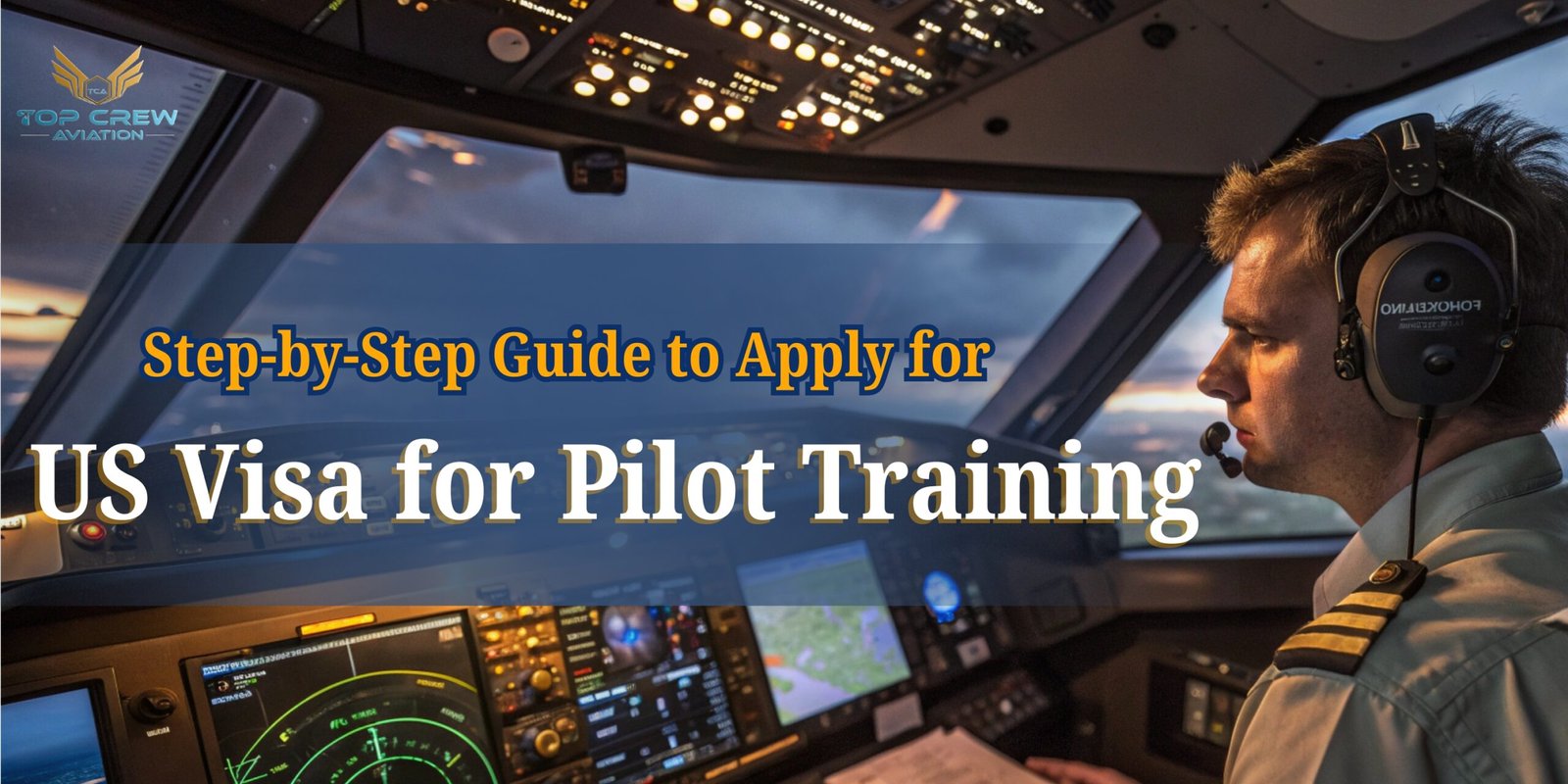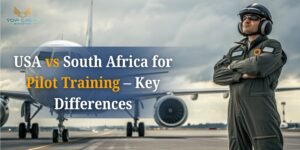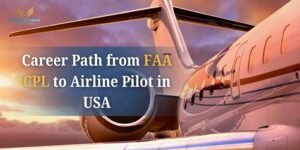Introduction – Understanding the US Visa Process for Pilot Training
If you dream of becoming a pilot, the United States is one of the best countries to begin your journey. With world-class flight schools in the USA, advanced technology, and internationally recognised certifications, the country attracts thousands of aspiring aviators every year.
However, before packing your bags, you must understand how to apply for a US visa for pilot training. The process can seem complex, but with the right guidance, it becomes much simpler. In this step-by-step guide, we’ll cover everything you need to know—from selecting an FAA-approved flight school to successfully obtaining your pilot visa USA.
Why Choose the USA for Pilot Training?
The USA is a global hub for aviation education, offering unmatched opportunities for aspiring pilots from around the world. Every year, thousands of international students choose to pursue their pilot training in USA because of its world-class facilities and globally recognised training standards.
Here’s why the United States remains a top choice for aviation students:
- High-quality flight schools approved by the Federal Aviation Administration (FAA) ensure strict safety and training standards.
- Diverse weather conditions across various states provide a well-rounded flying experience in different environments.
- Internationally recognised licences that open doors to airline careers across the globe.
- Easy access for international students through transparent and student-friendly visa processes.
Choosing to complete your pilot training in USA means gaining a world-class education, hands-on experience with advanced aircraft, and the opportunity to build a successful aviation career anywhere in the world.
Types of US Visas Available for Pilot Training
Before you begin your visa process, it’s important to understand the US visa types for pilot training. There are two main options:
- M1 Visa – For vocational or non-academic courses like pilot training.
- F1 Visa – For academic programmes or degree-based aviation courses.
Both visas allow you to study in flight schools in USA, but the visa type depends on your chosen training programme. The M1 visa is most common for students enrolling in standalone pilot courses.
Difference Between M1 Visa and F1 Visa for Pilot Students
Many students get confused between the M1 and F1 visas. Here’s how they differ:
| Feature | M1 Visa | F1 Visa |
| Course Type | Vocational (Pilot Training) | Academic (Degree in Aviation) |
| Duration | Fixed duration, usually up to 1 year | Flexible, depending on the course |
| Work Rights | Limited or none | Optional Practical Training (OPT) allowed |
| Extension | Possible with justification | Easier to extend |
For most international pilot trainees, the M1 visa for pilot training is the ideal choice.
Step 1: Choose an FAA-Approved Flight School in USA
Your first and most important step is selecting an FAA-approved flight school in USA. Only these schools can issue the I-20 form, required for your visa application.
When choosing a school:
- Check if it’s listed under FAA-approved institutions.
- Look for experienced instructors and advanced aircraft fleets.
- Compare total costs, accommodation, and safety measures.
Some of the best flight schools for international students include academies in Florida, Arizona, and Texas—states known for good weather and continuous flying opportunities.
Step 2: Obtain the I-20 Form from Your Flight School
Once accepted into a flight school, you’ll receive the Form I-20, an official document confirming your enrolment. This form is essential for your US visa for pilot training.
Check the form carefully—it should include:
- Your personal information
- Course details and duration
- SEVIS ID number
- School’s signature
Keep this form safe, as you’ll need it for SEVIS payment, visa interviews, and immigration checks.
Step 3: Pay the SEVIS I-901 Fee
Before applying for your visa, pay the SEVIS I-901 fee. SEVIS (Student and Exchange Visitor Information System) tracks all international students in the USA.
To pay:
- Visit fmjfee.com.
- Enter your SEVIS ID (found on your I-20 form).
- Pay the fee online using a credit card.
- Print the confirmation receipt.
This receipt is mandatory during your pilot training visa interview.
Step 4: Complete the DS-160 Visa Application Form
Next, you’ll need to complete the DS-160 form, the official online application for a non-immigrant visa.
Steps:
- Visit the Consular Electronic Application Centre (CEAC).
- Fill in accurate personal and educational details.
- Upload a digital passport-size photograph.
- Submit the form and print the DS-160 confirmation page.
This document is essential for scheduling your US visa appointment.
Step 5: Schedule a US Visa Appointment at the Nearest Embassy
Once your DS-160 form is ready, you can schedule your US visa interview appointment at the nearest US Embassy or Consulate.
You’ll need:
- DS-160 confirmation page
- SEVIS fee receipt
- Visa application fee payment confirmation
- I-20 form
Book your appointment well in advance, as interview slots may fill quickly during peak seasons.
Step 6: Prepare Required Documents for US Pilot Visa
Before your interview, prepare all the required documents for student visa USA. A complete file helps avoid delays.
Documents include:
- Valid passport
- I-20 form from the flight school
- DS-160 confirmation page
- SEVIS I-901 payment receipt
- Proof of financial resources
- Academic certificates and transcripts
- Visa appointment confirmation letter
Organise these neatly in a folder for quick access during your interview.
Step 7: Attend the US Visa Interview
The visa interview is a crucial step. During the pilot training visa interview, officers evaluate your intent to study and return home after training.
Tips:
- Answer confidently and honestly.
- Carry all your documents.
- Clearly explain why you chose the USA for pilot training.
- Show financial capability to pay for the entire course.
Common Interview Questions for US Pilot Visa Applicants
You might be asked questions such as:
- Why did you choose this particular flight school?
- What is your total course duration and cost?
- Who is funding your education?
- What are your career plans after pilot training in the USA?
- Will you return to your home country after completion?
Practice your responses carefully—confidence matters.
How to Demonstrate Financial Capability for US Pilot Training
During your visa process, you must prove that you can afford your education and living expenses.
Acceptable proofs include:
- Bank statements showing sufficient balance.
- Education loan sanction letters.
- Sponsorship affidavits from parents or guardians.
Remember, financial stability is one of the key factors for getting a pilot visa USA.
Visa Approval – What Happens Next?
Once your visa is approved, the officer will inform you verbally and keep your passport for stamping. You’ll receive your visa within a few days.
Check that:
- Your visa category (M1 or F1) is correct.
- The school’s name matches your I-20 form.
- The validity dates align with your course schedule.
Now, you’re ready to begin your aviation journey in the United States!
How to Track Your US Visa Application Status
You can track your visa status online at the CEAC website using your DS-160 number.
Statuses typically show as “Administrative Processing”, “Issued”, or “Refused.”
If the process takes longer than expected, don’t panic—it’s normal for a US visa for pilot training applications to take a few weeks.
What to Do If Your Visa Is Rejected
Visa rejection can happen due to:
- Incomplete documents
- Weak financial proof
- Inconsistent answers during the interview
- Lack of genuine study intent
If rejected, you can reapply after addressing the issues. Many students succeed on their second attempt with better preparation.
Documents to Carry While Travelling to the USA for Pilot Training
When travelling, always carry:
- Passport with visa
- I-20 form
- SEVIS payment receipt
- Flight school admission letter
- Financial documents
Keep copies of all important papers in your hand luggage for easy access during immigration checks.
Arriving in the USA – Immigration and Customs Tips
Upon arrival, present your passport, visa, and I-20 form at the immigration counter. The officer will stamp your I-94 record, confirming your entry.
Some quick tips:
- Be polite and cooperative.
- Declare all items as required by customs.
- Keep your school’s contact details handy.
You can now officially begin your pilot training in the USA!
Maintaining Visa Status During Pilot Training
Once you start your course, it’s essential to maintain your visa status.
Follow these rules:
- Attend classes regularly.
- Do not work without authorisation.
- Notify your school about address or course changes.
- Renew your visa before it expires.
Failure to comply may affect your future visa applications or re-entry to the USA.
How to Extend or Change Your US Pilot Visa
If your training extends beyond your visa validity, you can apply for an extension. Submit the request before your visa expires.
You may also apply to change your status (e.g., from M1 to F1) if you plan to continue an academic programme. Always consult your flight school’s Designated School Official (DSO) for guidance.
Conclusion – Start Your Pilot Journey in the USA the Right Way
Applying for a US visa for pilot training may seem lengthy, but following these steps ensures a smooth process. From selecting an FAA-approved flight school to attending your pilot training visa interview, preparation is key.
The USA remains one of the best destinations for flight education—offering high-quality training, modern aircraft, and global opportunities.
So, take the first step today. Choose your school, prepare your documents, and make your aviation dreams take flight in the United States of America.
Suggestion Blog URL:-



